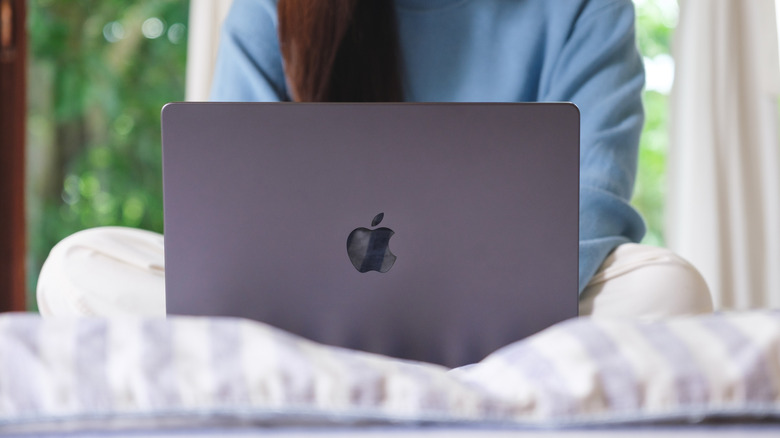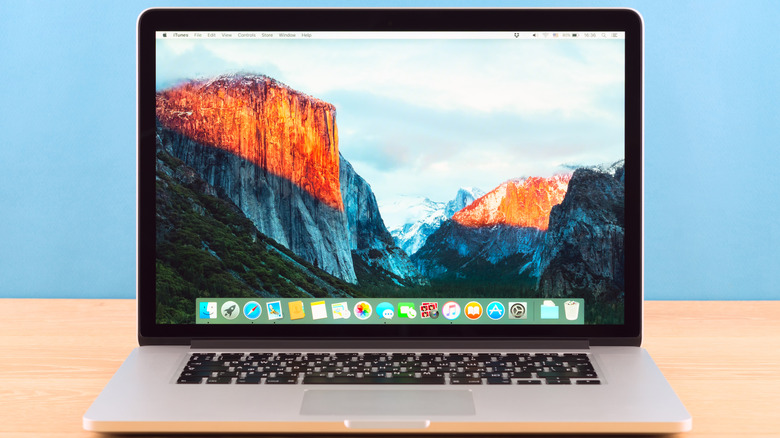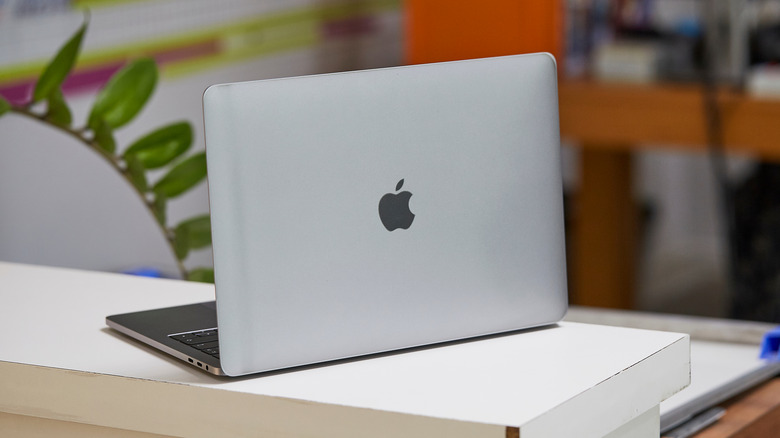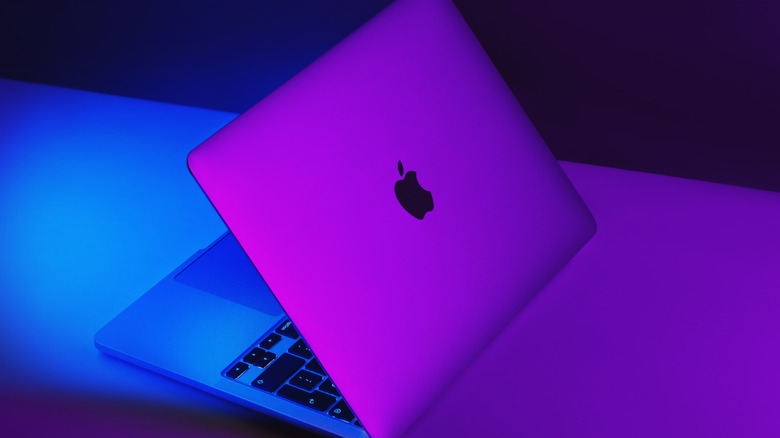4 Clever Uses For Your Old MacBooks
We may receive a commission on purchases made from links.
Just because a MacBook is old doesn't mean it's useless. There are plenty of uses for an old laptop, and while it may no longer be able to receive the latest updates and the hardware may be a few generations behind, that doesn't mean it's time to throw in the towel and recycle your old machine just yet.
While something like an M1 MacBook Pro still has plenty of hardware to remain a powerhouse, macOS Tahoe being the last major update for Intel Macs means an older machine may soon stop receiving new Apple features – if it hasn't already, that is. Even if Apple quietly discontinued your Intel Mac, there are still a number of ways to bring new life to it, including experimenting with other operating systems, transforming it into a Wi-Fi range extender, setting it up as a powerful media center or simply using it as a second monitor for your new rig.
Like repurposing an old iPad tablet, using any of the ideas below can be a great way to give your old MacBook a second chance. Just remember that some of these options may require additional accessories, such as a USB key or Ethernet cables. There are a lot of available options, so feel free to explore the choices below and see if any of them get some ideas percolating in your brain.
Experiment with other operating systems
Trying out different operating systems outside of macOS is a great use for an old machine. It's perfect for experimentation, and a more lightweight operating system can potentially perform better on your older device – especially if the MacBook is no longer receiving updates, which may soon include M1 Macs. You can always use BootCamp on an old Intel-based MacBook to run Windows, but honestly, it's pretty likely you're already familiar with this operating system.
When it comes to experimenting with different operating systems, a fantastic place to start would be with Linux. Since it's typically extremely lightweight, old Intel-based MacBooks should have no problem with it. If you find the prospect of running things off a command line terrifying, Linux Mint is a great place to start for beginners. It's open-source and pretty easy to configure without the need to install other programs. It also provides plenty of support documentation, including installation guides, user guides, troubleshooting guides, and more.
Linux Mint is but one type of Linux distro, so feel free to do some exploring to see what other options are available. Of course, there are other operating systems out there that you can try on an old MacBook as well. One cool alternative would be ChromeOS Flex, which is a cloud-based OS from Google based on ChromeOS. Installing this one is as easy as having an extra USB drive, but Google also provides an installation guide should you need it.
Make it a Wi-Fi range extender
If the internet in your house is spotty at best, and you don't feel like getting a Wi-Fi mesh system, no matter how well certain companies rank, using your old MacBook as a Wi-Fi range extender can be a good alternative. While there are differences between a mesh network and a range extender, using an old MacBook to extend your Wi-Fi can be a great, cheap alternative if there are certain areas of your house that simply aren't getting a connection.
For this to work properly, your old MacBook will need to be able to receive a wired Ethernet connection, so the device will either need an Ethernet port or an adapter. From here, you just need to connect your MacBook to your router with an Ethernet cable and ensure the laptop is located where you need service. Then you'll just take advantage of Mac's Internet Sharing feature. It's a feature that's been a part of macOS since OS X 10.6, so there's good odds your old MacBook supports it.
You can easily set up this feature by navigating to Apple Menu > System Settings (or preferences), selecting Sharing, and then selecting Internet Sharing. From here, just click Share your connection from and select the Ethernet connection.
Newer MacBooks may need to follow these steps:
-
Select Apple menu > System Settings.
-
Click General.
-
Select Sharing.
-
Enable Internet Share.
-
Choose your Ethernet Connection.
-
Below the To devices using section, make sure Wi-Fi is enabled.
Use your old MacBook as a second screen
Depending on the age of your MacBook, it may have a screen that's still worth using as a secondary display. Even if we're still waiting for a touchscreen OLED display in MacBook Pros, Apple is pretty well-known for screens with high resolution and rich color, so even if the hardware inside is outdated, using it as a secondary screen can be a great way to get some additional mileage out of your old MacBook.
One of the easiest ways to get started is through the Screen Sharing app. Each Mac will need to be using the same network. Here's what to do:
-
Locate Screen Sharing through a Finder window by navigating to Applications > Utilities or by performing a Spotlight Search.
-
Make sure Screen Sharing is enabled through Apple Menu > System Settings (or System Preferences) > General > Sharing.
-
Open the Screen Sharing app on the other Mac. You can then select Network in the app's sidebar.
-
Select the computer you want to access and choose Connect.
-
You can also click the Plus icon (+) in the toolbar to enter an Apple Account or hostname and choose Connect.
-
You may need to sign in with your Mac login information.
If both Macs are on the same network and using the same iCloud account, you may just be able to find your old MacBook as an external monitor option when navigating to Apple Menu > System Settings > Displays. Simply select your old MacBook and choose Use as from the menu that pops up. There's also paid third-party software, such as Luna Display and Duet Display, should you want to research other options.
Set up a media center
As streaming services seemingly only become more complicated and expensive, having the ability to rely on other media types can be a great backup plan for enjoying some of your favorite content. However, this is only good for MacBooks that are relatively older, considering the last MacBook to have such a drive was the 13-inch MacBook Pro in 2012.
You can go the external route for a DVD/CD drive, such as this one for $18.99 from Amicool on Amazon. It's got USB-A with a USB-C adapter, read/write capabilities, and even works with Windows and Linux, making it rather adaptable. It's an Amazon Overall Pick, and its 4.3-star rating and over 9,900 reviews suggest it's worth the money. Customers love it for its slim design and portability, making it a solid buy. However, this would be just the first step toward making your old Mac a super media center, should you choose.
Even if you want to forego the external drive, you can still repurpose your old device for digital media. If you're running macOS X 10.7.5 or later, VLC Media Player is a powerful open-source choice for playing virtually any digital media. There's also Plex Media Server, which transforms your old MacBook into a media server that will allow you to stream the content to other devices. Setting it up is as simple as registering an account, downloading the app to your Mac, adding your media, and then you can begin streaming media to other devices through the Plex app.




